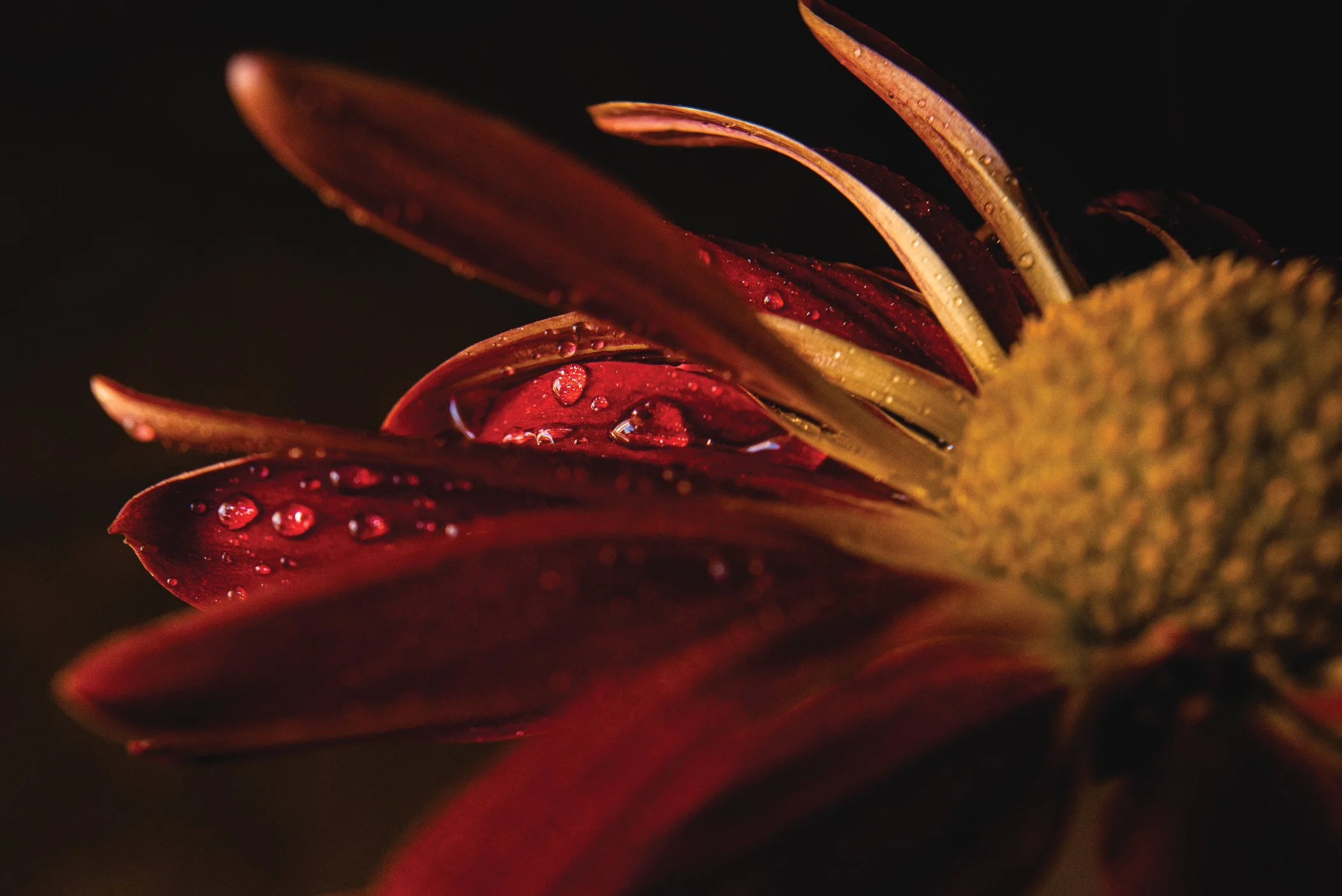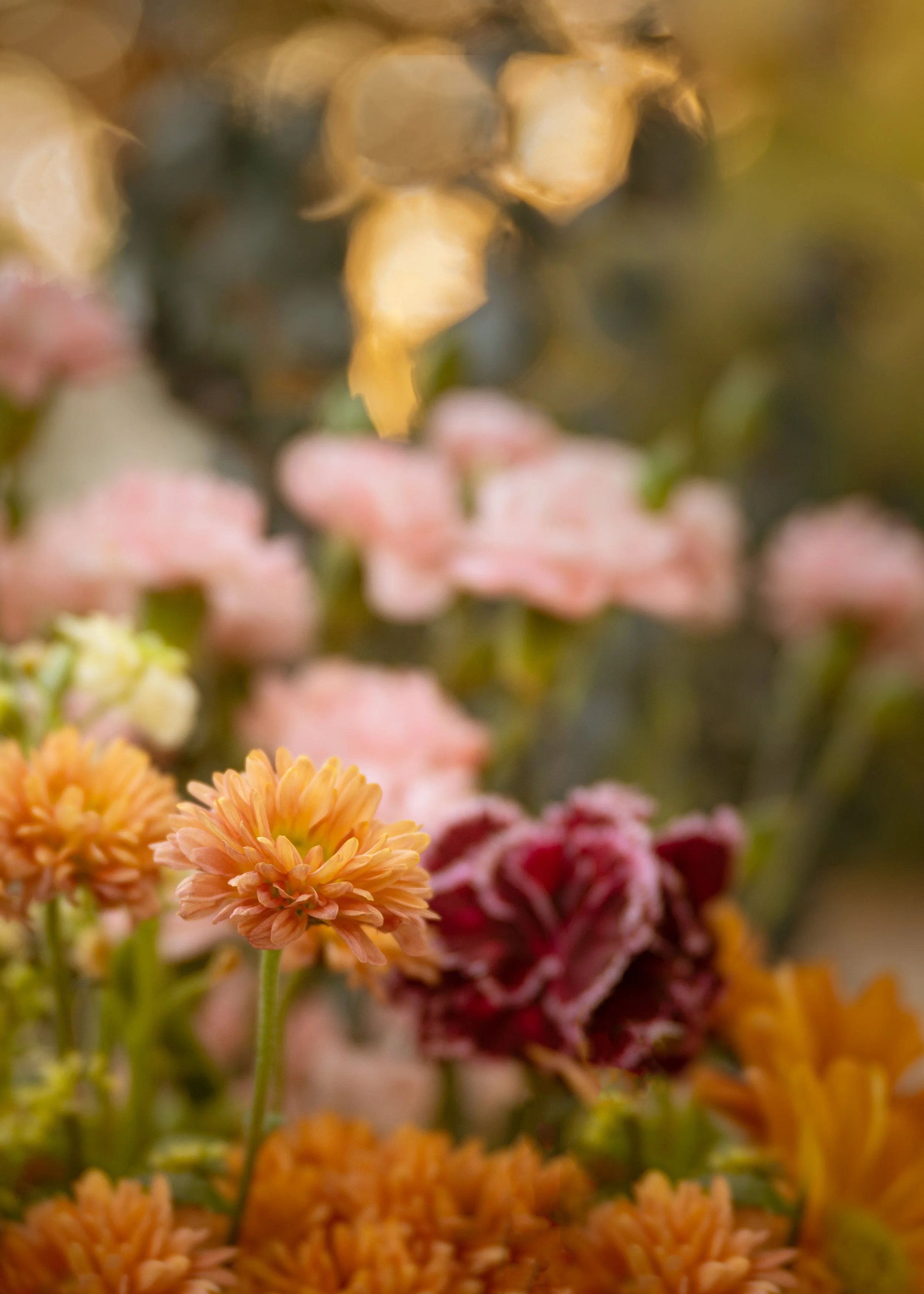Flower Photography
With Lisa Edney
Welcome to spring everyone!!!
Above: Apricot blossoms with Lensbaby soft focus II, f/2.8, 1/100 sec, ISO 2500, JJC Macro Extension 11mm tube
Shooting flowers is absolutely one of my passions and I'm excited to share this month with you.
There are may ways and types of flowers to shoot. From wild, to store bought, a single blossom or a bouquet. Using Natural light or artificial. The bud, to full bloom, to the decay of a blossom, the entire lifecycle of a flower holds beauty. The sky is the limit! We can even use many of the tips and tools we've discussed in the first three months to enhance our flowers.
For those of you who might be new, here are a few articles to help get you started.
10 Flower Photography Tips for Gorgeous Flowers
Learn the Best Techniques for your Flower Photography
Depth of Field
Use depth of field that isolates the flower, part of the flower (or flowers) to highlight and bring details into focus for the viewer. Strategically use a depth of field large enough to retain the details in the subject portion of your flower while letting non essential details fall into blur.
Above: Lensbaby Velvet 56, F/5.6, ISO1000, 1/200 sec. I wanted most of the front of this flower in focus while the greenery falls off into darkness & blur.
Below: Lensbaby Velvet 56, f/4.0, ISO2000, 1/160 sec. Here I wanted a smaller slice of focus to draw attention to the water droplets.
Get Close
With a regular (non-macro) lens, you can add Macro Extension tubes or Macro Filters to get closer to your subject with any lens without spending hundreds of dollars on a macro lens. Or you can use the lenses or filters on a macro to get even closer to your subject.
More on these tools from our friends at B&H.
Make it Rain
In the Desert, rainy days are rare. And sometimes water on still life images can add extra beauty. You can make your own rain by purchasing vegetable glycerin and mixing it with water: 1 part glycerin with 2 or 3 parts water. Put this in a spray bottle to spritz on flowers & plants. This creates beautiful round droplets on leaves and petals for photography, but is VERY sticky & can be messy. It is best used on easy to wipe or clean surfaces or outdoors. Be careful not to spray any on your camera gear.
Above: Fujifilm 60mm macro, f/4.0, 1/125 sec, ISO 250. The depth of field here captures the many blossoms against a tree line and setting sun.
Below: Sigma 105mm macro, f/13, 1/200, ISO 3200. The white of the flowers in contrast to the deep green leaves makes this a pleasing B&W image.
Tripod or Not?
I shoot most of my flower photography handheld, but sometimes (& especially if you want a specific section of your flower in focus) using a tripod to stabilize is a huge help to ensure a clear image. When shooting hand held, keep your shutter speed high and increase ISO accordingly to ensure a sharp image.
Above Lensbaby Velvet 85: f/4.0, 1/100 sec, ISO 800. Taking a store bought bouquet outside to shoot at sunset with light filtering through the trees at the end of my street created beautiful bokeh in the back ground. Pulling this blossom up and forward makes it stand out clearly against the rest of the bouquet.
Below Lensbaby Velvet 85: f/4.0, 1/320 sec, ISO 500. The backlight on this row of flowers captured my eye as they glowed in the setting sun. Shooting across the lake makes them pop from the dark tree line.
Flowers & Emotion
Don't be afraid to add a human subject or other elements to your flower photography. Flowers are used to convey so many emotions and can enhance the mood of your story & subject.
Above: Nikon 24-70mm, f/3.5, 1/200sec, ISO 200 at 48mm.
Below: Nikon Velvet 56, f/4.0, 1/250sec, ISO100
I can't wait to see what you capture! And if you have tips and tricks, Let’s chat!
Lensbaby Velvet 85: f/4.0, 1/800 sec, ISO 250
https://www.edneyimages.com/
https://www.instagram.com/edneyimages/










